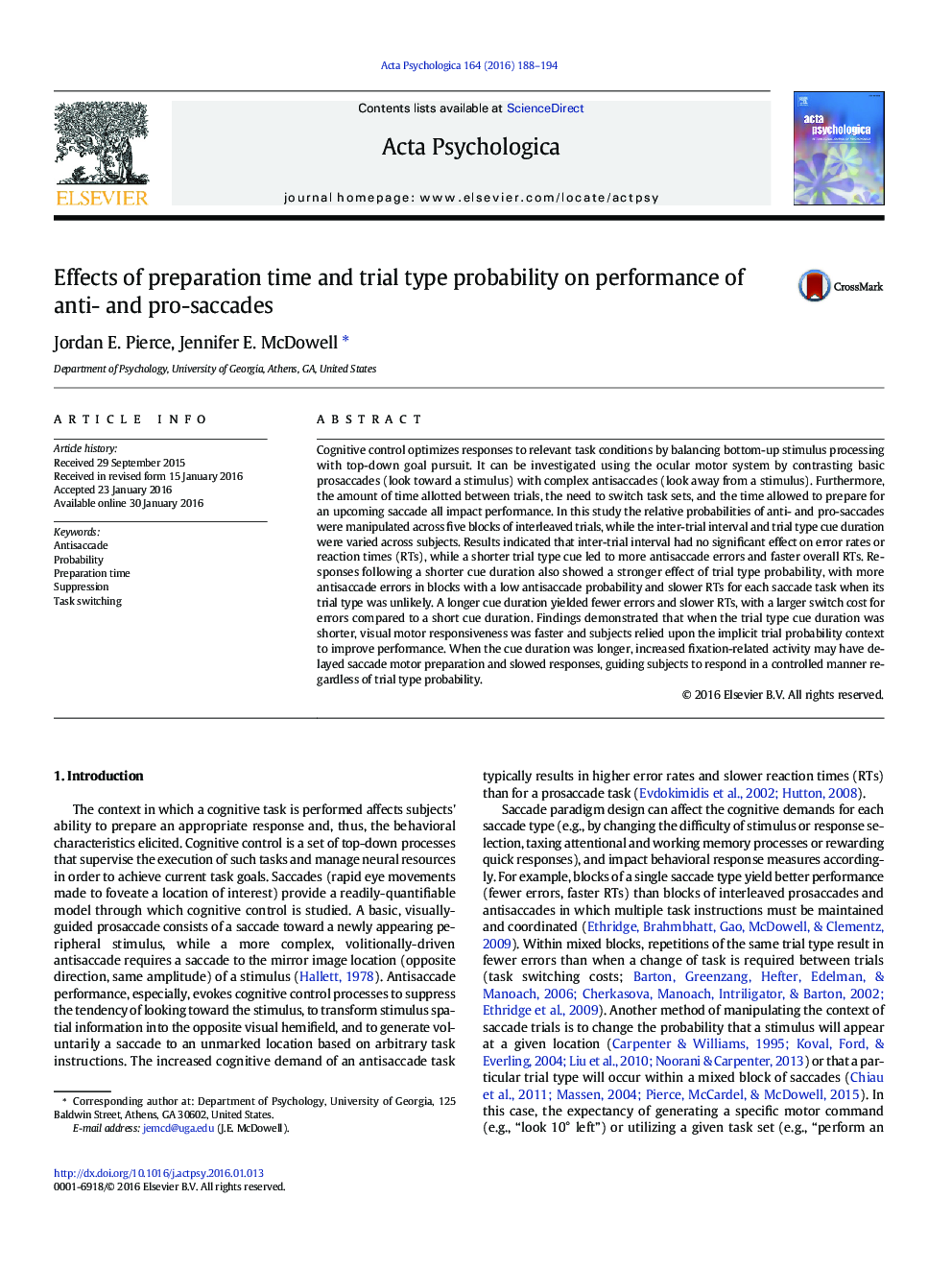| کد مقاله | کد نشریه | سال انتشار | مقاله انگلیسی | نسخه تمام متن |
|---|---|---|---|---|
| 919673 | 1473594 | 2016 | 7 صفحه PDF | دانلود رایگان |
• Anti/pro-saccade probability, ITI, and cue duration were varied across conditions.
• ITI had no effect on behavioral responses.
• A short cue led to more anti errors and faster RTs with a strong probability effect.
• A long cue led to fewer errors and slower RTs, with a larger error switch cost.
• Visual responsiveness and motor control varied with trial type preparation time.
Cognitive control optimizes responses to relevant task conditions by balancing bottom-up stimulus processing with top-down goal pursuit. It can be investigated using the ocular motor system by contrasting basic prosaccades (look toward a stimulus) with complex antisaccades (look away from a stimulus). Furthermore, the amount of time allotted between trials, the need to switch task sets, and the time allowed to prepare for an upcoming saccade all impact performance. In this study the relative probabilities of anti- and pro-saccades were manipulated across five blocks of interleaved trials, while the inter-trial interval and trial type cue duration were varied across subjects. Results indicated that inter-trial interval had no significant effect on error rates or reaction times (RTs), while a shorter trial type cue led to more antisaccade errors and faster overall RTs. Responses following a shorter cue duration also showed a stronger effect of trial type probability, with more antisaccade errors in blocks with a low antisaccade probability and slower RTs for each saccade task when its trial type was unlikely. A longer cue duration yielded fewer errors and slower RTs, with a larger switch cost for errors compared to a short cue duration. Findings demonstrated that when the trial type cue duration was shorter, visual motor responsiveness was faster and subjects relied upon the implicit trial probability context to improve performance. When the cue duration was longer, increased fixation-related activity may have delayed saccade motor preparation and slowed responses, guiding subjects to respond in a controlled manner regardless of trial type probability.
Journal: Acta Psychologica - Volume 164, February 2016, Pages 188–194
